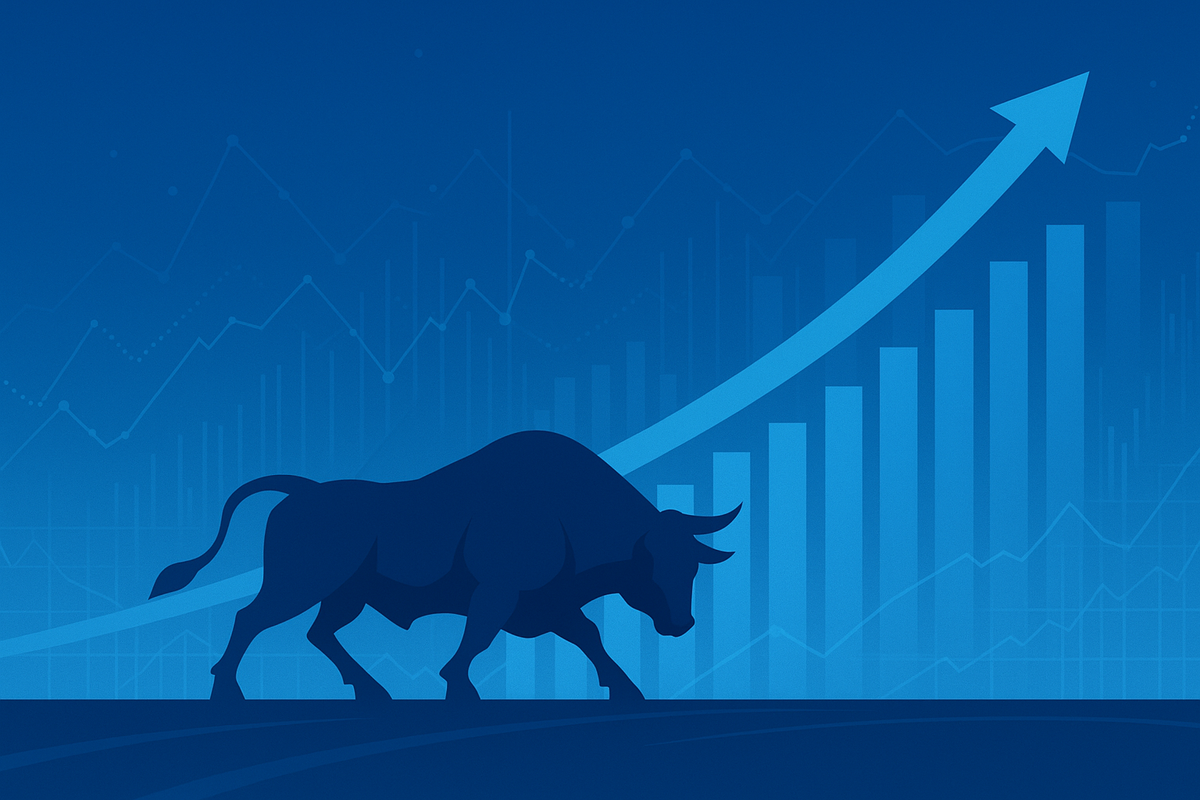The Acceleration Phase of the Greatest Bull Market in History

The model remains firmly on track, stronger than expected. September, which was projected to be a mild pullback, instead delivered steady gains as Mideast peace developments added an unexpected tailwind to risk assets. October followed with similar strength, leaving markets up 3.5% and 2.3% in each of the two months respectively.
Looking ahead, the forecast calls for November up 2.5%, December flat to down about 0.5%, and then a massive advance in 2026, our historical analog to 1927, with gains of at least +35%, and potentially as much as +100% if the current momentum in liquidity, peace, and productivity continues.
If the 1920s serve as our roadmap, and so far, they’ve matched nearly point for point, then 2026 marks the true acceleration phase of this supercycle. Back then, the U.S. economy entered its most dynamic and prosperous period in modern history, powered by electrification and industrial expansion. Today’s economy is driven by the same forces in modern form: AI adoption, fiscal and monetary stimulus, and domestic capital investment.
The parallels are unmistakable. Immense productivity gains. Declining immigration. Lower energy costs. A surge in domestic manufacturing and data infrastructure. What electricity did for the 1920s, artificial intelligence is now doing for the 2020s, rewiring the economy in real time.
September Surprise: A Mild Forecast Turns into a Mideast Rally
September was expected to bring a mild 1–2% pullback, the first meaningful pause of the year. Instead, the market climbed steadily as geopolitical progress in the Middle East added a powerful new layer of confidence. The peace process, once seen as a long shot, became a reality, and its effects rippled across global capital markets.
Energy prices eased, regional risk premiums collapsed, and investors who had been holding defensive positions rotated back into equities. The resulting rally is an acceleration in timing, an early ignition of the next phase.
October carried that strength forward, confirming that volatility was contained and that market breadth was expanding. Together, the two months delivered gains of roughly 6%, above expectations, and setting the stage for another leg higher into year-end.
Liquidity and the Great Reopening of Capital
The macro data confirm the shift. M2 money supply grew at a 5.4% annualized rate in September, up sharply from a 4.2% year-over-year pace. That may seem like a small move, but it represents a meaningful reacceleration in liquidity growth after more than two years of contraction.
The implications are profound. Rising M2 alongside falling real rates and a softening dollar marks the official end of the post-tightening regime. Capital markets have reopened. Credit spreads are narrowing, central banks are aligning in their first synchronized easing since 2020, and liquidity is once again finding its way into risk assets.
This is precisely the setup that preceded the speculative boom of 1927–1928: declining yields, rising productivity, and accelerating velocity of money.
Peace, Productivity, and Policy: The Trifecta of Expansion
The Mideast peace agreement is another economic accelerant. With reduced military risk and stabilized oil flows, capital that had been sitting on the sidelines is now reintegrating into global markets. Lower energy prices translate directly into higher real disposable income, stronger corporate margins, and an extended business cycle.
At the same time, AI adoption has entered its exponential phase. The diffusion of large-model intelligence across logistics, manufacturing, healthcare, and finance is no longer theoretical. Productivity is rising in real time, with measurable margin expansion and reduced labor intensity across multiple sectors.
Overlay those two drivers with a Federal Reserve poised to ease more aggressively in early 2026, and the picture becomes clear: liquidity, stability, and innovation are converging in a way that echoes the final ascent of the 1920s.
The 1927 Parallel: Where We Are Now
If 1927 was the year that set the stage for the greatest speculative boom in history, 2026 may serve the same role in this cycle. The conditions line up with uncanny precision:
- Policy rates in decline, with liquidity expansion well underway.
- Rapid technological adoption transforming corporate productivity.
- Falling energy costs amplifying real growth.
- Geopolitical stabilization restoring confidence.
In 1927, markets rose 35%. In 1928, they rose again by nearly the same magnitude before the final blowoff. The model’s base case remains a +35% gain for 2026. But with peace, liquidity, and AI diffusion all hitting simultaneously, as much as a 100% move remains a distinct possibility.
The Bull Market Enters Its Acceleration Phase
September’s upside surprise, born from peace rather than policy, marked a turning point. The mild pullback never arrived because the world changed faster than the forecast. With Mideast peace fueling risk appetite, AI propelling productivity, and liquidity expansion confirming the macro turn, the bull market has entered its acceleration phase.
November is expected to rise another 2.5%, December should flatten or dip slightly as markets digest gains, and then 2026 begins the final ascent—one that could match or even exceed the wildest years of the Roaring Twenties.
The thesis hasn’t changed. The magnitude has. The model remains intact, the direction unchanged, and the timing confirmed. Only the strength has surprised.
The future didn’t just arrive, it showed up early. Now is the time to be bold and participate in the third and greatest leg of the most powerful bull market of all time.





